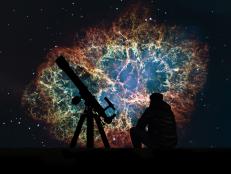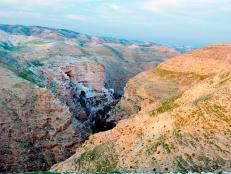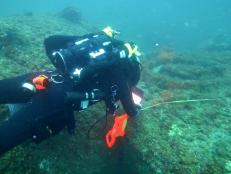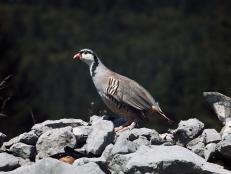Articles
Showing 2,416 - 2430 of 2,628 results
Over 80 Snakes Caught! Meet the Winners of the 2020 Python Bowl
Guardians of the Glades Star Mike “Python Cowboy” Kimmel is the 2020 Python Bowl Champion!
Check Out the Crab Nebula –The Leftovers from a Giant Cosmic Firework
The Crab Nebula sits 6,500 light-years away, and is currently about 11 light-years across. But while it looks pretty from afar, don’t give in to the temptation to visit it up close.
This Tanzanian Lake is a Vision in Red- And You Can Visit
This picturesque lake in northern Tanzania is harsh enough to burn anything that touches it. Unless, of course, you're one of the select few species adapted to thrive in it.
Expedition Unknown Kicks Off with a New Discovery About D-Day
In an epic, two-hour season premiere, Josh Gates travels to the D-Day battlefields and the beaches of Normandy where he joins investigators making history-changing discoveries about the Longest Day.
Adventure and Exploration in Israel’s Ancient Deserts
Israel is a country packed full of history and culture. Head out on an adventure to discover ancient ruins, crumbling monasteries, and lush oases.
The Marble Caves Of Patagonia Will Immediately Trigger Travel Envy
Sometimes, the art humans create pales in comparison to the works made by nature. The Marble Caves are one such marvel: erosion and light has turned geological formations into colorful works of sculpture.
The Flu: How It Spreads, and How You Can Stop It
Every year like clockwork, we are confronted with the dreaded flu season. Scientists work tirelessly to understand Influenza and how we can prevent the spread.
One of the Bermuda Triangle’s Greatest Mysteries May Have Been Solved!
While filming Shipwreck Secrets, Michael Barnette and his team believe they have located the SS Cotopaxi, a cargo ship that vanished without a trace almost 100 years ago. Shipwreck Secrets premieres Sunday, February 9 at 8p ET on Science Channel.
Starry Night Toad Found After Decades of Supposed Extinction
A Harlequin Toad that was lost to science for nearly three decades has emerged from the jungle.
5 Things You Didn't Know Climate Change Could Do
Climate change has some complex effects that you may not even realize exist. Read on to learn more.
These 800-Year-Old Ethiopian Churches Are Each Carved From a Single Stone
The world is full of ancient stone monuments, but have you heard about the mind-blowing underground churches of Lalibela, Ethiopia?
The Legend of the Black Mamba
How a snake inspired Kobe Bryant’s beloved nickname.
How the Mediterranean Became a Corridor of Death for Birds
Across the world, the bird population is thinning due to illegal poaching and habitat loss, especially in Europe and Africa during migratory seasons. Conservation groups globally are trying to protect our nearly extinct feathered creatures.
DNA's Building Blocks May Have Their Origins in Outer Space
One of life's building blocks could have originated in outer space. But if this experiment shows how these building blocks actually formed, how exactly did they get to Earth?
A Spot in Washington Is One of Only 12 Silent Places Left in the U.S.
The most endangered sound on Earth doesn't come from a near-extinct animal or an outmoded form of transportation — it's silence.






















